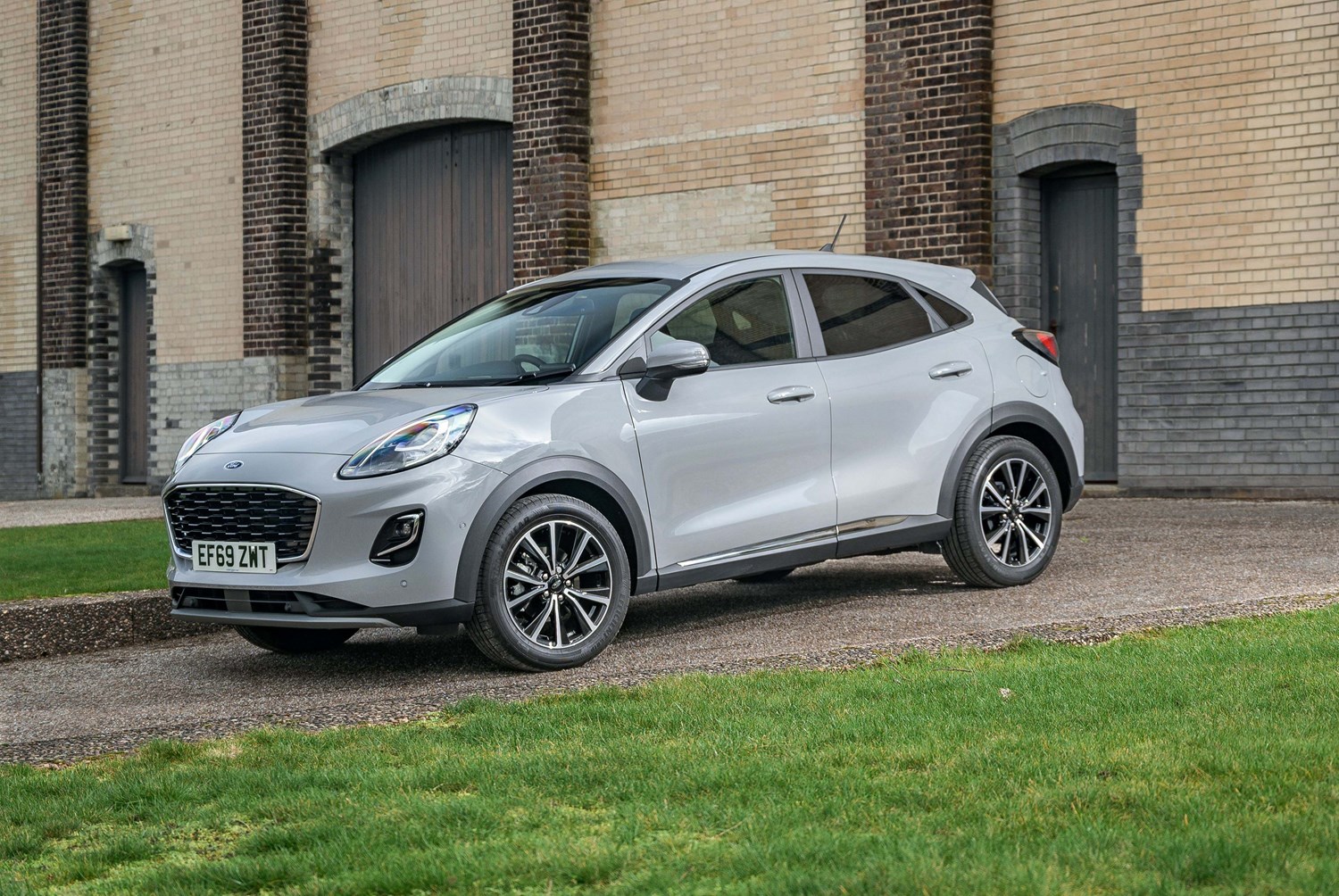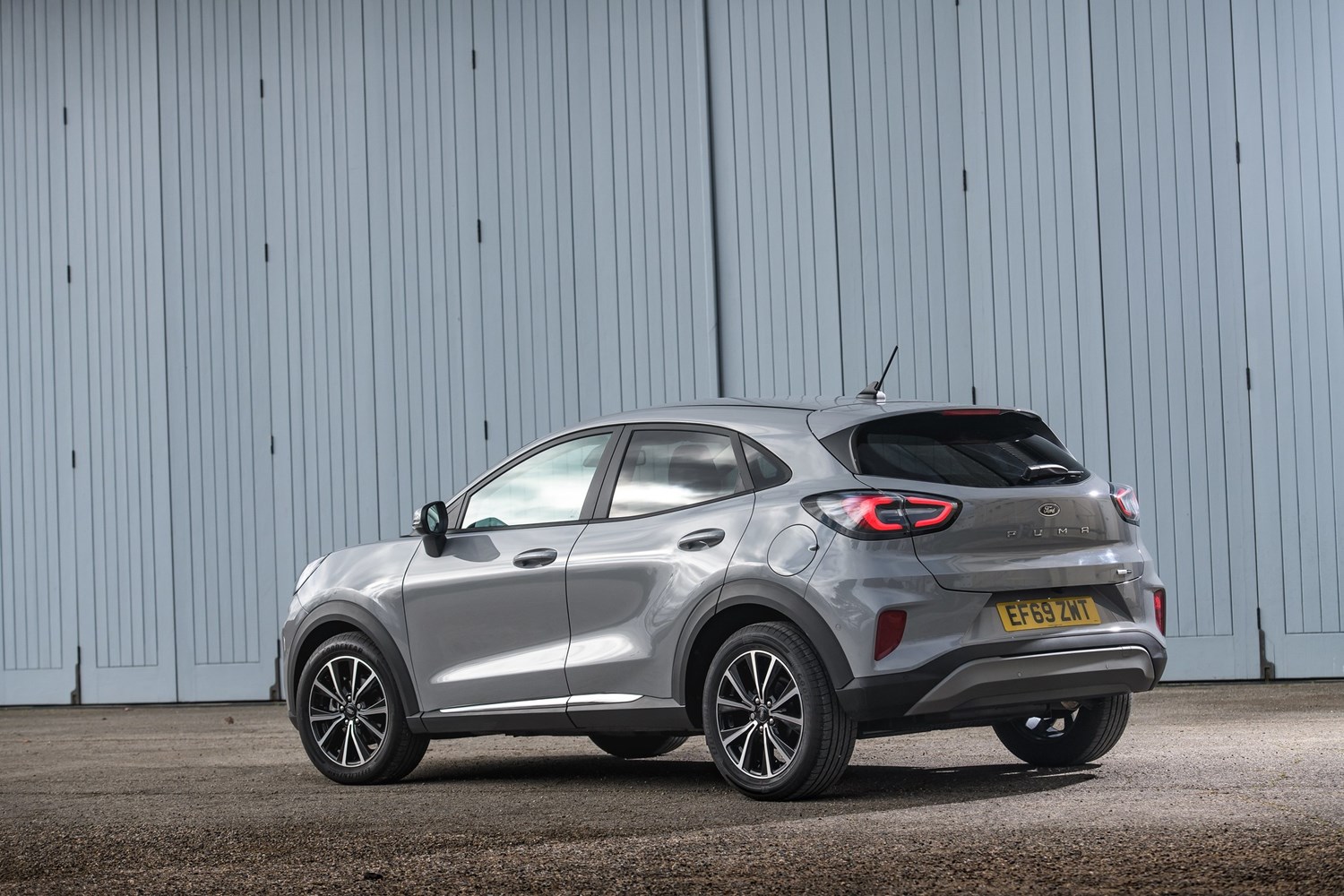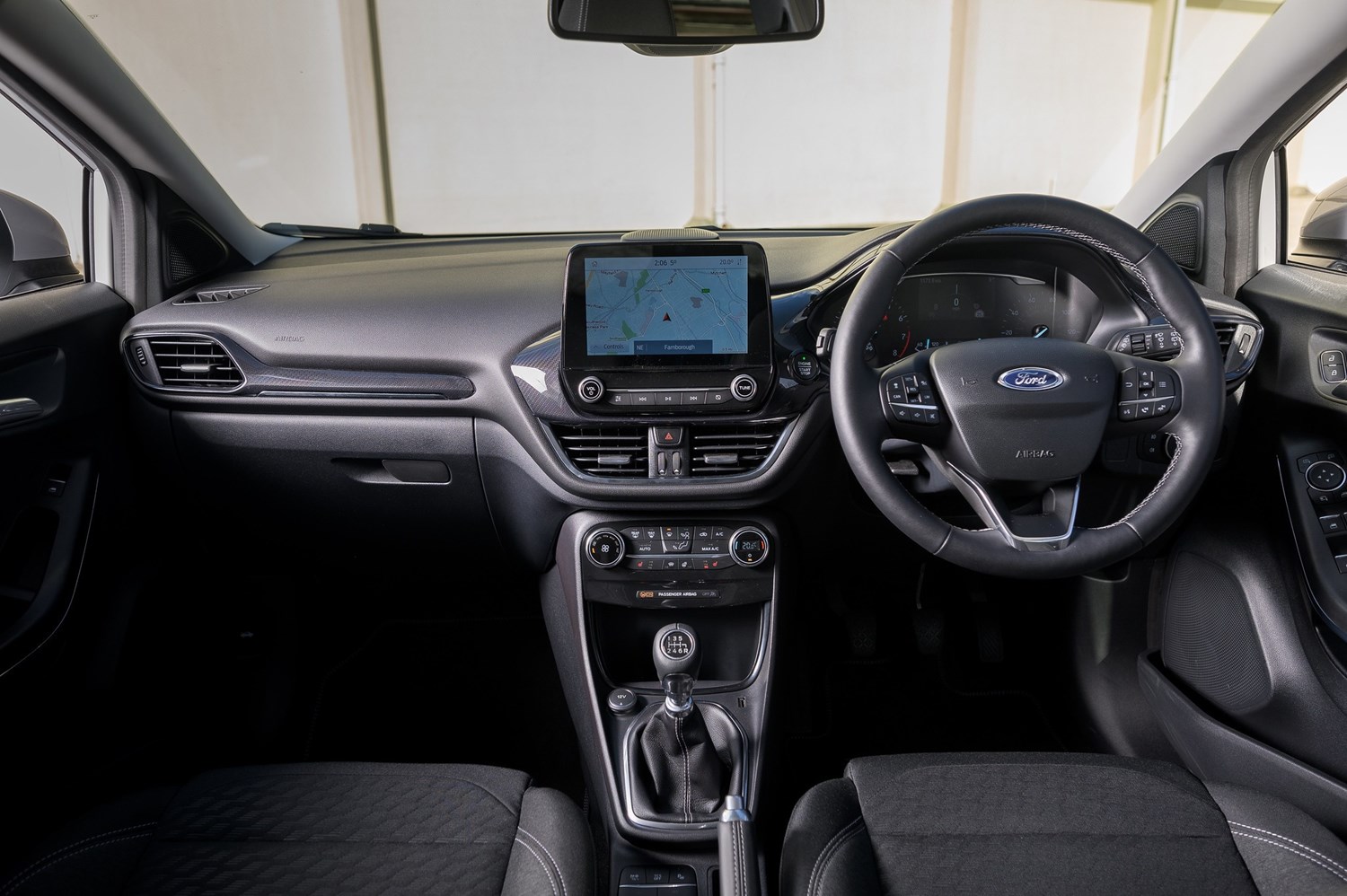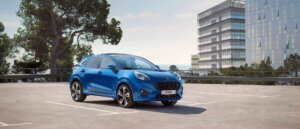Space and practicality
While the cabin looks pretty compact from the outside, thanks to those narrow windows and low roofline, you’ll find more than enough space up front. It’s not the biggest in its class but even six-footers won’t feel cramped. It is, however, a slightly different story in the rear where it can feel a little claustrophobic because of those narrow windows and rear legroom is compromised for taller people. If you need plenty of rear space, then we’d recommend looking at offerings like the Skoda Kamiq.
With the rear seats upright, the boot is a good size – 456 litres compared to the 422 litres in the Juke. You also get a large hidden underfloor storage which adds an additional 80 litres of room, and is waterproof and ideal for storing muddy boots, etc. The rear seats can be folded 60:40 as well to extend the boot space further. Be warned though, the load lip is pretty high, so it will make it slightly harder lifting heavier items in.
Engines
If you choose a Puma with a six-speed manual gearbox, you get the mild-hybrid system as standard. It’s available on Ford’s 1.0-litre EcoBoost petrol engine, which is available with either 123bhp or 153bhp. So, with only a 1.0-litre unit you might not be expecting blistering performance, but the range topping 153bhp model, with the help of a 48-volt battery, will do the 0-60mph dash in a more than respectable 8.5 seconds.
The hybrid system is particularly clever too as it can kill the engine when you’re coming to a stop to help when it comes to saving fuel. Think of it as a more elaborate stop start technology that helps to save fuel and provide additional torque – rather than being able to run on electricity like full hybrids can. Even the entry level hybrid will do the 0-60mph dash in under 10 seconds which is noticeably quicker than some of its rivals.
If you want an automatic version, a seven-speed gearbox is available on the 123bhp 1.0-litre petrol engine, though misses out on the mild-hybrid tech. There are no diesels available in the current line-up, and we’d be surprised if Ford introduced any, but a hot ST model is set to join the line-up at the end of 2020 with around 200bhp.
Running costs
Because the Puma is powered by a 1.0-litre petrol engine, running costs were always going to be low, but because there’s the option of hybrid power too this improves things considerably. The hybrids should return around 50mpg and low emissions of 127g/km of CO2.
Though no diesel option is available, these petrol engines should still be suitable for drivers covering a lot of miles.





